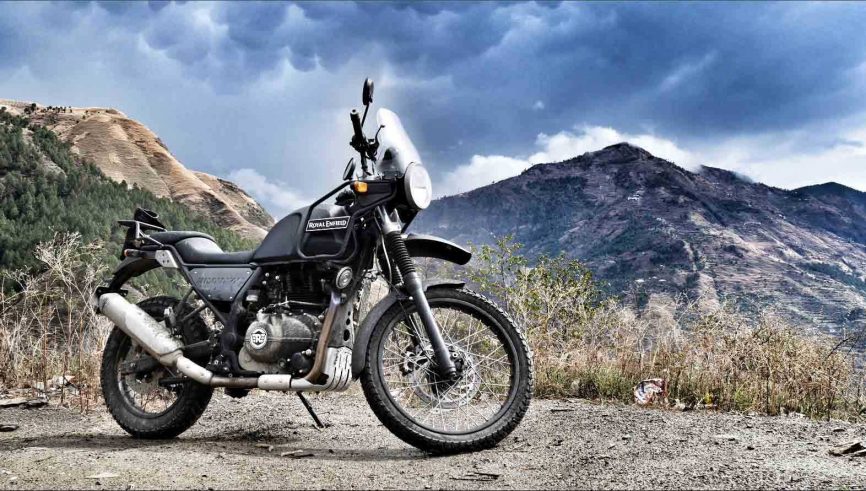Since its inception, motorcycle enthusiasts have tried to decode the allure of Royal Enfield. The brand with the most analogue bike in an equally digital world has earned its name to retain the very ethos it was built on even after years of operation.
Owning a Royal Enfield involves appreciating the more elemental aspect of a motorcycle, along with a fondness for tweaking the machine. The brand has been successfully thumping away in the face of a market flooding with power-dense, high-tech motorcycles and yet there is no dethroning them as the ultimate coming-of-age machines.
The company enjoys a rich history since the time it made its first motorcycle in 1901. So we trace back all the important milestones of the company that has been rewriting its own records to achieve more glory at each turn.
1901- First RE Motorcycle

Almost a decade after being founded, the company came up with its first official motorcycle. This was after it dabbled in the business of small arms at the Royal Enfield Small Arms Factory and the introduction of its own quadricycles before producing the first ever 1.5hp motorcycle with a front-mounted engine.
1932- Birth of the Bullet

On a global level, the Bullet is the best visual indicator of Royal Enfield. The bike began its life as a standard British single-cylinder machine that was available in 250cc, 350cc and 500cc iterations. Its stout-hearted thump has been preserved across the century, tweaked and improved for multiple generations. For years after it was introduced into the motorcycling landscape, the Bullet was a lifeline for police officials and the Indian Army to explore the outer edges of the country and truly test its limits.
1994- The Eicher acquisition

Close to 24 years after British-owned Enfield Cycle Company seized its operations, Eicher Motors stepped in for a takeover in 1994. By this time, Enfield India Ltd had continued to produce the Bullet without interruption. However, Eicher’s acquisition was coupled with unprecedented growth and diversification in the Indian turf. As architects of the new Royal Enfield, Eicher ensured that the models evolved with respect to time and had modern technology, marking the new beginning of a new era in RE’s production history.
2002- Drumrolls for the Thunderbird

The steady torque curve and simple mechanic components of the standard Bullet had become a favourite for riders looking for a go-to cruising bike, even though it wasn’t built to be one. This sparked an opportunity for the Eicher owned company for their first smashing success- the Thunderbird 350- Royal Enfield’s very own cruiser. Something about the high-handlebars and a more relaxed-riding position made it just as popular in the city as it was on the highways.
2009- Enter the Classic 350 and 500

After the predictive success of the Bullet Electra 350, it was time to further contemporise the brand further by introducing more modern touches to the relatively untouched architecture. Hence, curtains on the new retro-styled Classic 350 and 500 were raised. It used fuel-injection and twin-spark technology along with lighter aluminium components to make a more spirited RE for international markets.
2013- Foray into the Café Racer segment

After their much-hyped acquisition of British performance racing outfit Harris Performance, Royal Enfield rolled out its first café racer iteration which was built with Harris Performance lending a hand in the development of the chassis and engine. The Royal Enfield Continental GT was finally the most powerful moniker in the brand’s portfolio and turned heads with its slick red paint scheme.
2016- Exploring new frontiers with the Himalayan

The launch of Himalayan in 2016 rewrote the adventure motorcycling scene around the world. Numerous motorcycle manufacturers are still scrambling for a piece of the pie that RE enjoys a major share of. The lightweight bare-bones Himalayan retains the trademark Royal Enfield ability to lug significant amounts of weight while offering more comfort, stability and power on challenging terrains.
With the launch of the Interceptor 650 and the Continental GT 650, RE has opened yet another new chapter in its book. The 650 twins now stand as two of the most affordable parallel-twin bikes around the world. Since they were launched last year, the Interceptor and the Continental GT have received critical acclaim, praised for their agility, power delivery and ease of riding.
A few years back, when Royal Enfield said that it aimed to be the largest middle-weight motorcycle manufacturer in the world, little did we know that it would come up with something as comprehensive as the Interceptor and Continental GT 650. The 650-twins have clearly proved RE’s ability to retain its heritage while aptly evolving with time.

